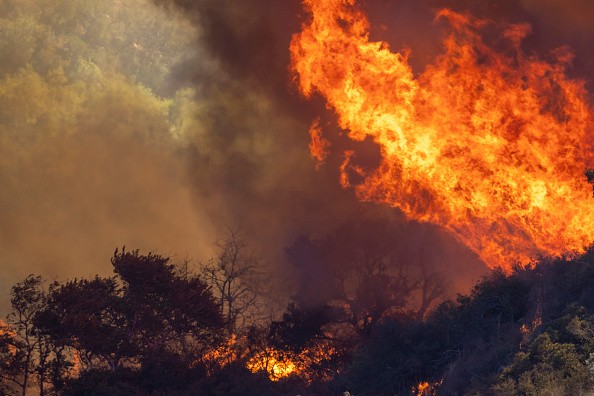According to UCLA and Lawrence Livermore National Laboratory researchers, climate change is the primary cause of the expanding amount of land in the western United States that big wildfires have burned over the last two decades.

Unprepared for Climate Change

According to Rong Fu, a UCLA professor of atmospheric and marine sciences and the study's corresponding author, the tendency is projected to increase in the years ahead. "I'm concerned that the recent record fire seasons are just the beginning of what's to come as a result of climate change, and our civilization is unprepared for the rapid increase in weather that contributes to wildfires in the American West."
U.S. government data support the substantial rise in wildfire devastation. Data from the Geological Survey. In the 17 years between 1984 and 2000, an average of 1.69 million acres per year was burnt in 11 western states. Every year, the average burnt area over the following 17 years, from 2001 to 2018, was around 3.35 million acres. According to a study from the National Interagency Coordination Center, wildfires in the West burnt 8.8 million acres in 2020, an area greater than Maryland.
However, the factors that contributed to the massive increase have been a source of contention: how much of the trend was caused by human-caused climate change, and how much could be explained by changing weather patterns, natural climate variation, forest management, earlier springtime snowmelt, and reduced summer rain?
Analyzing Climate Data
The researchers used artificial intelligence to analyze climate and fire data to estimate the roles of climate change and other factors in determining the critical climate variable linked to wildfire risk: vapor pressure deficit. The findings were published in the journal Proceedings of the National Academy of Sciences.
Pressure Shortage
The vapor pressure deficit is the difference between the quantity of moisture in the air and the amount of water stored when it is saturated. The air may pull more moisture from soil and plants when the vapor pressure deficit, or VPD, is bigger. Large wildfire-burned regions, particularly those not close to cities, have substantial vapor pressure deficits linked with warm, dry air.
According to the study, human-caused global warming was responsible for 68 percent of the rise in vapor pressure deficit over the western United States between 1979 and 2020. According to scientists, the remaining 32% difference was most likely caused by naturally occurring changes in weather patterns.
The data imply that rising fire weather in the western United States is primarily due to human-caused climate change.
"And our estimates of the human-induced effect on the rise in fire weather risk are likely to be conservative," said Fu, who is also the head of UCLA's Joint Institute for Regional Earth System Science and Engineering, a NASA-funded cooperation.
The researchers looked at the so-called August Complex wildfire in Northern California in 2020, which burnt over a million acres. They concluded that human-caused warming was responsible for 50% of the region's previously unheard-of high VPD during the month the fire started.
Fire Frequency

Even while wetter and cooler temperatures may provide small respites, Fu anticipates wildfires to grow more fierce and frequent in the western states overall. And, despite the increased vapor pressure deficit, locations, where great expanses of plant life have already been destroyed to fires, drought, heatwaves, and road construction are unlikely to witness an increase in wildfires.
"Our findings show that the western United States has crossed a crucial threshold-that human-induced warming is now responsible for the increase in vapor pressure deficit rather than natural changes in air circulation," Fu said. "Our research demonstrates that this shift has been occurring since the beginning of the twenty-first century, considerably sooner than we expected."
For more climate and weather updates, don't forget to follow Nature World News!
© 2025 NatureWorldNews.com All rights reserved. Do not reproduce without permission.





